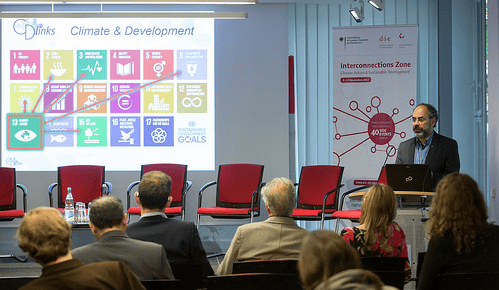Are governments moving forward to achieve the Paris goals? What are the key sectors and measures for low-carbon development in different countries?
These are some of the issues addressed by the CD-LINKS project, which presented its latest results at COP23, including an analysis of the strategies to achieve the 1.5°C and 2°C targets in countries such as Brazil, China, the European Union and India.
Studies show that in Brazil the production of biofuels and carbon capture and storage techniques are strategic areas to focus on for the transition to a low carbon economy, along with improvements in transport electrification. Land-use management will therefore play a key role in increasing crops for biofuels and at the same time developing afforestation and forest protection projects.
In India, where over 300 million people currently do not have access to electricity, the fight against energy poverty is a decisive challenge for the government, which established the goal of bringing electricity to 100% of villages by 2019. To align this challenge with the need of reducing emissions, the key measures identified by CD-LINKS are the gradual replacement of old coal-fired power plants with facilities to produce clean energy (from solar, wind or nuclear sources) and the increase in energy efficiency in buildings (through the diffusion of LED light sources and energy efficient air conditioners).
According to the latest CD-LINKS results, current national policies fall short of the commitments taken under the Paris Agreement (NDC) and further strengthening is needed in all countries. Even for countries which are close to meeting their NDCs, significant increase in effort is needed to meet the collective targets of 1.5° or 2°C.
Financed by the European Commission’s Horizon 2020 programme, the research project CD-LINKS brings together a consortium of 19 leading international research organizations, including the CMCC, to improve understanding of the linkages between climate change policies and the Sustainable Development Goals adopted in 2015.
The CMCC contributes to CD-LINKS in the multi model comparison exercise exploring the synergies between development and climate policies at national and global level, as well as by developing statistical analysis on the effectiveness of existing climate policies on green innovation.




